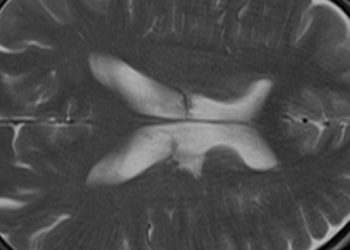2 Minute Medicine Rewind June 24 – June 30
Image: PD
June 24 – June 30, 2013
In this section, we will highlight the some of the high-impact studies, updates, and analyses published in medicine during the past week.
Clopidogrel with Aspirin in Acute Minor Stroke or Transient Ischemic Attack
In this multicenter open label RCT, patients with a minor ischemic stroke or TIA was randomized at 24hrs to aspirin or clopidogrel and aspirin for secondary prevention of stroke. At 90 day follow-up, patients receiving clopidogrel and aspirin had a decreased rate of ischemic strokes (7.9% vs. 11.4%, p<0.001) and an equal rate of hemorrhagic strokes (0.3% each). There was no statistically significant difference in hemorrhagic events or adverse drug effects.
Contribution of Preventable Acute Care Spending to Total Spending for High-Cost Medicare Patients
In this retrospective cohort analysis, investigators looked at Medicare records and identified patients in the top decile of costs to assess the potential of preventative acute care services to lower costs. Patients in the top decile were more likely to be male, African American, and with significant comorbid conditions, and accounted for 32.9% of all ED costs and 79.0% of all inpatient costs. The investigators suggest only 9.6% of costs in high-cost patients were the result of preventable hospitalizations compared to 16.8% in non-high-cost patients, suggesting there is limited cost containment through better outpatient care.
Use of Advanced Treatment Technologies Among Men at Low Risk of Dying From Prostate Cancer
In this retrospective cohort analysis using SEER data, investigators looked at the time trend in the use of expensive advanced treatment technologies like intensity modulated radiotherapy (IMRT) and robotic prostatectomy for patients with low risk disease and/or unlikely to die from prostate cancer. Patients with low risk disease and high noncancer mortality risk underwent advanced treatment technology from 25% in 2004 to 34% in 2009.
In this retrospective analysis of admissions for Guillain-Barre Syndrome in Ontario, Canada, investigators found that the relative incidence of Guillain-Barre Syndrome within 6 weeks of influenza vaccination was 1.52 (CI: 1.17 – 1.99) compared to baseline. The attributable risks were 1.03 Guillain-Barre Syndrome admissions per million vaccinations, compared with 17.2 Guillain-Barre Syndrome admissions per million influenza-coded health-care encounters. The investigators suggest that the relative and attributable risks of Guillain-Barre syndrome after seasonal influenza vaccination are lower than those after influenza illness.
Family Cluster of Middle East Respiratory Syndrome Coronavirus Infections
A novel, high acuity coronavirus was identified in September 2012 in the Middle East that is genetically distinct from the SARS virus. A total of 49 cases and 26 deaths have been reported to the WHO since May 28, 2013 with URI symptoms, hemoptysis, lymphocytopenia, thrombocytopenia, and exertional dyspnea. Acute renal failure has been reported in a few cases, requiring hemodialysis in at least two Saudi men. The virus does not appear to be highly infectious given long course and frequent contact in unaffected family members of this family cluster.
By David Ouyang
© 2013 2minutemedicine.com. All rights reserved. No works may be reproduced without written consent from 2minutemedicine.com. Disclaimer: We present factual information directly from peer reviewed medical journals. No post should be construed as medical advice and is not intended as such by the authors or by 2minutemedicine.com. PLEASE SEE A HEALTHCARE PROVIDER IN YOUR AREA IF YOU SEEK MEDICAL ADVICE OF ANY SORT. Content is produced in accordance with fair use copyrights solely and strictly for the purpose of teaching, news and criticism. No benefit, monetary or otherwise, is realized by any participants or the owner of this domain.







